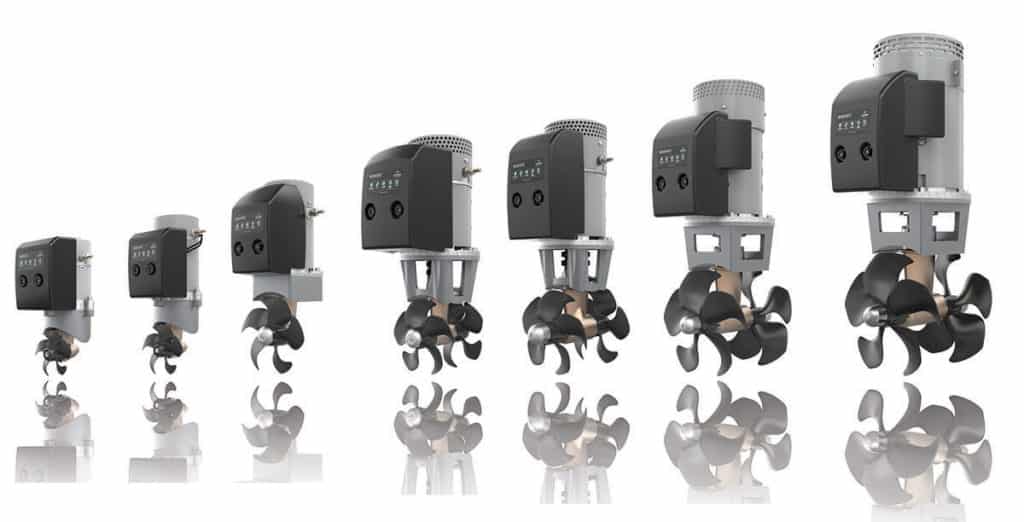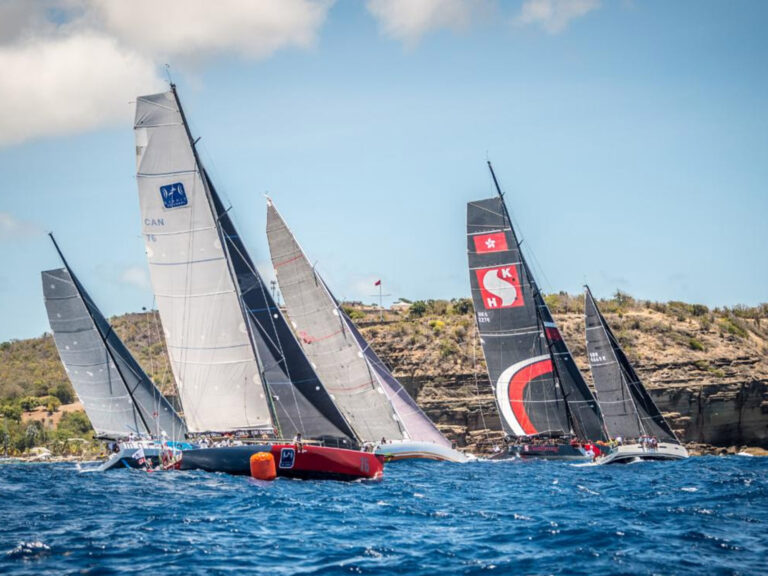
How do Bow & Stern thrusters work?
In simplest terms, thrusters are designed with propellers facing in a sideways direction so when they are turned on, they push the bow or stern of a boat sideways through the water, in either direction. If only one thruster is used, for example in the bow, then the boat will also turn and change orientation. If bow and stern thrusters are operated simultaneously, a boat can be moved sideways without changing orientation.
Many thrusters have simple on/off controls and deliver full power either to port or starboard as long as the propellers are engaged. Some thrusters are capable of delivering more nuanced or “proportional” control to the captain through graduated power delivery to the propellers. Some thrusters are also connected to joystick-operated helm controls, thereby linking the main engine propeller systems to the thrusters for improved low-speed maneuvering.
What different types of thrusters are used on recreational boats?

Tunnel thrusters are the most common arrangement for side thrusters, with a tunnel installed through the bow below the waterline and a propulsion unit (the thruster) inserted into the tunnel from inside the boat. The tunnel is usually constructed of fiberglass tubing, which both protects the thruster unit and concentrates the thrust from the propeller. This is usually the least expensive installation if there is an appropriately located space for the tunnel. One of the challenges of tunnels is creating a proper radius at each end of tunnel to allow water to be sucked into the tunnel without cavitation (bubbles of air hitting the propeller blades). If cavitation occurs, thrusters can become very noisy and lose up to 25 percent of overall performance.
In higher-performance boats, deflectors on the forward side of the tunnel entrances also become important to minimize any speed loss due to turbulence.

External thrusters are typically used when a boat doesn’t have enough space for a tunnel to be installed, or in the case of a stern thruster, when the tunnel would not only take up too much space but generate less power due to the long span required. Carrying a thruster as an external appendage does create a small amount of drag, dampening performance, particularly on 35-knot-plus boats but this is often minimized by locating it on the transom. It can also be a challenge to fit a boat with an external thruster on a boat trailer, and there is, in addition, some potential for damage if you snag the buoy for a crab or lobster trap.

Retractable thrusters, as the name suggests, may be retracted into the hull when not in use. This eliminates additional drag, which is something that sailors among others are often concerned about. It also solves limitations due to draft, for example, if the bow section of a boat is too shallow and therefore any tunnel would be too close to the waterline to be effective. More space is required in the hull by a retractable thruster, however, along with the need for a mechanical installation. On Side-Power thrusters, electric actuators are used to extend and retract this kind of thruster.
For more information about Side-Power Thrusters visit Imtra, or call us at 508-995-7000.




